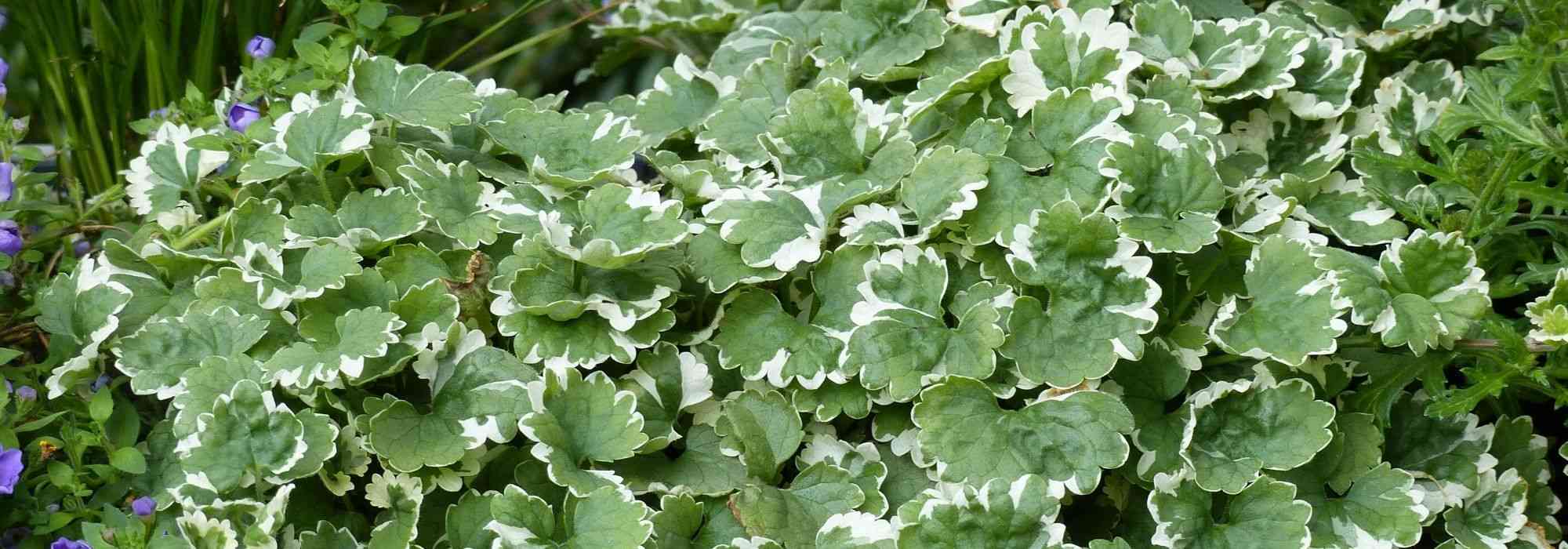
Glechoma hederacea, ground ivy: planting, care, properties
Contents
Ground ivy in a nutshell
- Glechoma or ground ivy makes an excellent groundcover for partial shade or shade
- Its semi-evergreen and aromatic foliage is very decorative, variegated with cream in certain varieties like ‘Variegata’
- In spring, it is adorned with small fragrant blue flowers
- It is an aromatic, edible, and medicinal plant, hardy and very easy to grow in rather cool, fertile soil
- It can be used in woodlands, in borders, but also in flowering pots and hanging baskets
A word from our expert
The Glechoma, also known as ground ivy (Glechoma hederacea), is a fabulous vigorous groundcover for woodlands, with rapid growth, perfect for landscaping the soil beneath deciduous trees and bushes. It blends seamlessly into the wild decor of woodlands as well as in the fresh beds of shrubs or perennials. It also makes a striking display in containers and hanging baskets, cascading beautifully. To avoid any confusion, this is indeed an aromatic and edible plant, not the climbing ivy or common ivy (Hedera helix), which is a toxic plant.
In early spring, small blue-purple flowers will adorn its more or less evergreen leaves, brightening shaded areas of the garden, particularly in its lovely variegated form Glechoma hederacea ‘Variegata’. This robust and reliable perennial, decorative almost all year round, forms dense and fairly wide clumps, making it an ideal groundcover for shade, partial shade, and sun, in humus-bearing and cool soil. It allows very few weeds to pass through, potentially replacing lawn in neglected corners.
Edible and rich in essential oils, ground ivy is known for its medicinal properties. It has numerous digestive, diuretic, expectorant, and tonic properties that are widely used in homeopathy, also for treating respiratory infections. You can preserve your flowering stems of ground ivy by freezing or drying.
According to legend, ground ivy was once considered a magical plant and associated with white magic.
It is very easy to grow, grows vigorously as a groundcover without the gardener’s help, and is truly only threatened by summer drought. Discover our selection!
Description and Botany
Botanical data
- Latin name Glechoma hederacea
- Family Lamiaceae
- Common name Ground ivy, herb of St. John, false ivy
- Flowering March to June
- Height 0.15 to 0.30 m
- Exposure Sun, Partial shade, Shade
- Soil type rich, light, cool
- Hardiness -15°C
The Glechoma (Glechoma hederacea), also known as “ground ivy”, “common ground ivy”, or “herb of St. John”, among its many nicknames, is a perennial plant from the Lamiaceae family, like lamium, mints, and thymes.
It grows spontaneously in deciduous woods, uncultivated meadows, or along hedges and paths in Europe, Asia, and North America.
The genus comprises 12 species of creeping aromatic and medicinal perennials, including Glechoma hederacea and its variegated varieties, which are the only ones represented in gardens.
It is a groundcover plant that spreads at an astonishing rate and roots through stolons, much like strawberries. Ground ivy forms beautiful clumps with a creeping habit, not exceeding 15 cm in height but capable of covering 2m², ultimately creating large carpets of greenery that can become smothering… Its name literally means “the mint that creeps like ivy.”
On its creeping and pubescent stems of a lovely purplish hue, unfolds a pretty foliage that is more or less evergreen and aromatic. It has small, opposite leaves that are soft, rounded or heart-shaped, crinkled, glabrous or downy, with crenate margins.
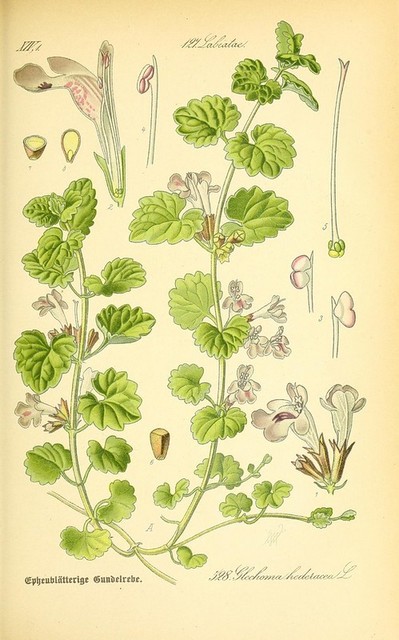
Glechoma hederacea – botanical illustration
Green in the typical species, they are variegated with silver-green, cream, and blue-green in Glechoma hederacea ‘Dappled Light’ and marbled with white-cream in the Glechoma hederacea ‘Variegata’. These very bright variegated leaves contrast with the square, purplish stems characteristic of the Lamiaceae.
When crushed, this foliage exudes a balsamic, slightly acrid scent.
On this dense yet very light vegetation, small mouth-shaped flowers appear from March to June, measuring 1 to 2 cm long, grouped in small whorls of three or four in the axils of the leaves. Initially tubular, they open into a bilabiate corolla formed of a short, notched upper lip divided into two lobes and a broader lower lip divided into three spreading lobes. They are contained within a campanulate and hairy calyx, all facing the same direction. They are adorned with a blue-violet colour punctuated with purple and emit a sweet, fresh, herbaceous fragrance with honeyed notes. Particularly nectariferous, the flowers of ground ivy are highly visited by foraging insects.
The entire plant emits a scent that is both vanilla-like and camphoraceous, and the stems, leaves, and flowers of the Glechoma are edible.
Easy to cultivate and very hardy beyond -15°C, ground ivy is a woodland plant that thrives in any cool soil, in shade or partial shade.
It makes a lovely groundcover to provide relief and lightness in woodland areas at the base of shrubs or at the foot of a deciduous hedge, in borders, but also in pots on the balcony and in hanging baskets where its trailing effect is very decorative.
Read also
The best hardy geraniums for shadeMain species and varieties
Most Popular
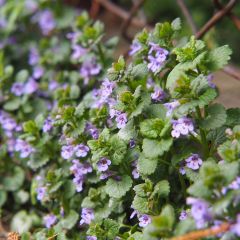
Glechoma hederacea - Ground Ivy
- Flowering time April, May
- Height at maturity 15 cm
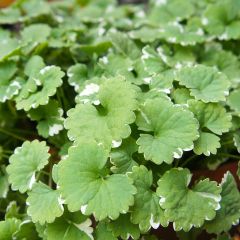
Glechoma hederacea Variegata - Variegated Ground Ivy
- Flowering time April, May
- Height at maturity 15 cm
Our Favourite
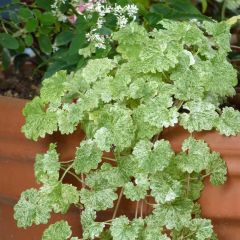
Glechoma hederacea Dappled Light - Ground Ivy
- Flowering time April, May
- Height at maturity 15 cm
Discover other Glechoma
View all →Available in 1 sizes
Available in 1 sizes
Available in 2 sizes
Planting
Where to Plant Ground Ivy?
The Glechoma hederacea or Ground Ivy thrives in all our gardens, withstanding cold down to at least -15°C.
This woodland perennial will flourish if you install it in the shade of trees. Ground Ivy prefers shaded areas and even total shade. It will look best in shade or partial shade but can adapt to all situations. It will tolerate a sunny spot as long as the soil remains sufficiently cool. It enjoys cool, humus-bearing soil and will establish itself well in ordinary, light, fresh, and moist soil. Avoid cultivating it in particularly dry and stony ground.
Provide it with a location where it can thrive comfortably, as its creeping stolons ensure effective colonisation: Ground Ivy can become a bit invasive and smother neighbouring plants. However, it is a very welcoming plant for biodiversity: it is appreciated by bees and bumblebees. Enjoy it, but don’t let it take over!
It is ideal for natural or wild gardens and in a woodland garden to form colonies at the base of deciduous shrubs that will protect it from summer heat. It will effectively cover the ground while limiting the growth of weeds in the more rustic and wild areas of the garden, but its tendency to spread makes it more suitable for larger spaces. It will also thrive in rockeries or fresh borders as groundcover, creating a very bright and natural scene. In pots or hanging baskets, it will create a lovely effect with its trailing stems forming cascades of greenery.
When to Plant Ground Ivy?
Planting Ground Ivy is best done in autumn or spring, preferably in September or March, outside of frost periods but when the weather is rainy, which will facilitate its rooting.
How to Plant Ground Ivy?
In the Ground
It is advisable to maintain a distance of about 30 cm between Ground Ivy plants (3 per m²). It will thrive in rich, humus-bearing soil.
- Place the root ball in a basin filled with water
- Dig a hole 2 to 3 times the volume of the pot
- Add compost or well-decomposed manure at planting
- Plant the root ball, with the collar level with the soil surface
- Backfill, firming down with the palm of your hand
- Water generously
- Mulch the soil after planting to retain moisture at the base
And find our tips for properly planting a perennial!
In Pots or Hanging Baskets
- Spread a good layer of clay balls at the bottom of a sufficiently large, drainage hole container
- Plant the pot in good potting soil mixed with a bit of compost
- Water regularly, never allowing the substrate to dry out

Flowering and various foliage of Ground Ivy: Glechoma hederacea, G. ‘Variegata’ and G. ‘Dappled Light’
Maintenance and Care
Vigorous, the ground ivy requires almost no care once well established. It needs cool soil: provide regular watering in the first year and during summer droughts. In pots, watering will be more frequent than in open ground.
Mulch in spring with a good layer of dry straw or turf to maintain sufficient coolness at the base.
Hand-pull rooted runners if you prefer to prevent it from spreading too much. Limiting the proliferation of weeds, its qualities as a groundcover are useful in a low-maintenance garden.
It is neither susceptible to diseases nor pests. Occasionally, slugs and snails may nibble on the foliage. Protect it from their appetite with our 7 ways to fight slugs effectively and naturally.
When and how to divide?
Even though it manages very well on its own, Ground ivy is incredibly easy to divide in autumn.
- Using a spade, lift a clump of soil containing several runners.
- Take a few shoots from the edge of the clump.
- Replant immediately and firm the soil around to ensure good contact between the roots and the substrate.
- Be sure to water well to encourage rooting.
How to combine ground ivy in the garden?
The Glechoma or ground ivy is primarily used as a groundcover, especially since its foliage often persists through winter. It offers a lovely spring flowering in blue-mauve, above evergreen foliage that is medium green or variegated with cream and silver, depending on the variety. It will quickly add a colourful and bright touch under trees, bushes, along walls, or in paths without too much scorching sun.
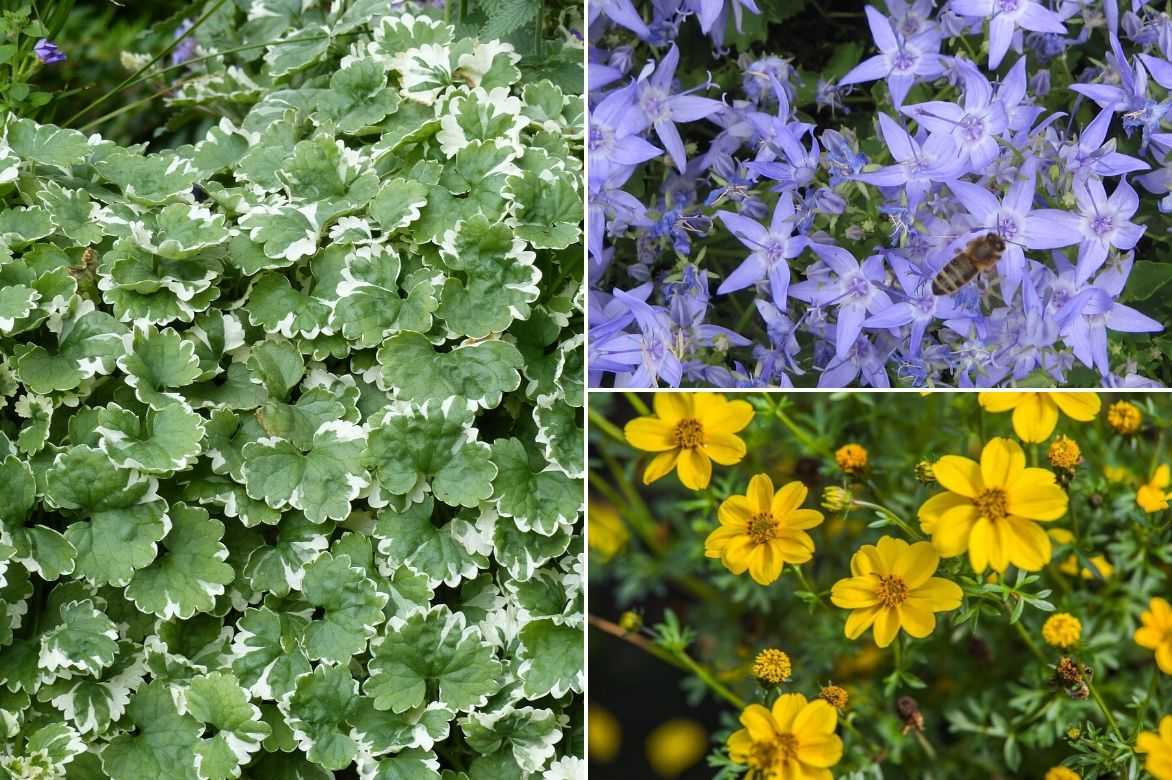
An example of association in a pot or planter: Glechoma hederacea ‘Variegata’, Campanula garganica, and yellow Bidens like ‘Golden Eye’ for example
This hardy plant is as robust in cool climates as Symphytum grandiflorum and Symphytum caucasicum, Vinca major (greater periwinkle), ivy (Hedera), or Brunnera. Feel free to plant it alongside a carpet of pulmonarias at the foot of hostas (Hosta ventricosa), goat beards, Solomon’s seal, astilbes, and astrantias. It pairs well with other woodland plants like lamiums, elf flowers, and Ligularias.
When associated in a woodland setting with spring bulbs such as Allium ursinum, wood anemone, muscaris, wood hyacinth, and daffodil, it will look stunning! It can be integrated at the front of borders to form edges or in small touches, in front of Heucheras or hardy geranium ‘Spessart’ or nodosum.
Use it, for example, to cover a corner of the garden that is at risk of being overrun by ivy and brambles, and accompany it with Eastern Borage and European Asarum.
In a planter or hanging basket, Glechoma hederacea ‘Dappled Light’ will blend with other annuals in plug plants such as Nemesia Sunsatia ‘Little Vanilla’, Petunia Surfinia ‘Yellow’, and Osteospermum ‘Summersmile Soft Yellow’ that will bloom all summer on your balconies, terraces, and window sills.
→ Discover more association ideas with ground ivy in our advice sheet!
Did you know?
It is attributed with numerous medicinal properties, including diuretic, astringent, expectorant, and tonic virtues. In syrup or infusion, its flowering tops relieve respiratory tract ailments, particularly bronchitis, dry coughs, and asthma. Its flowers have a pronounced sweet taste and its fresh leaves will subtly enhance salads and soups. Considered a healing plant, Ground Ivy was at the heart of white magic in the Middle Ages. The Vikings and Celts used it to flavour beer.
Useful resources
- What to plant under trees?
- Low-maintenance garden: discover the essential plants!
- Subscribe!
- Contents
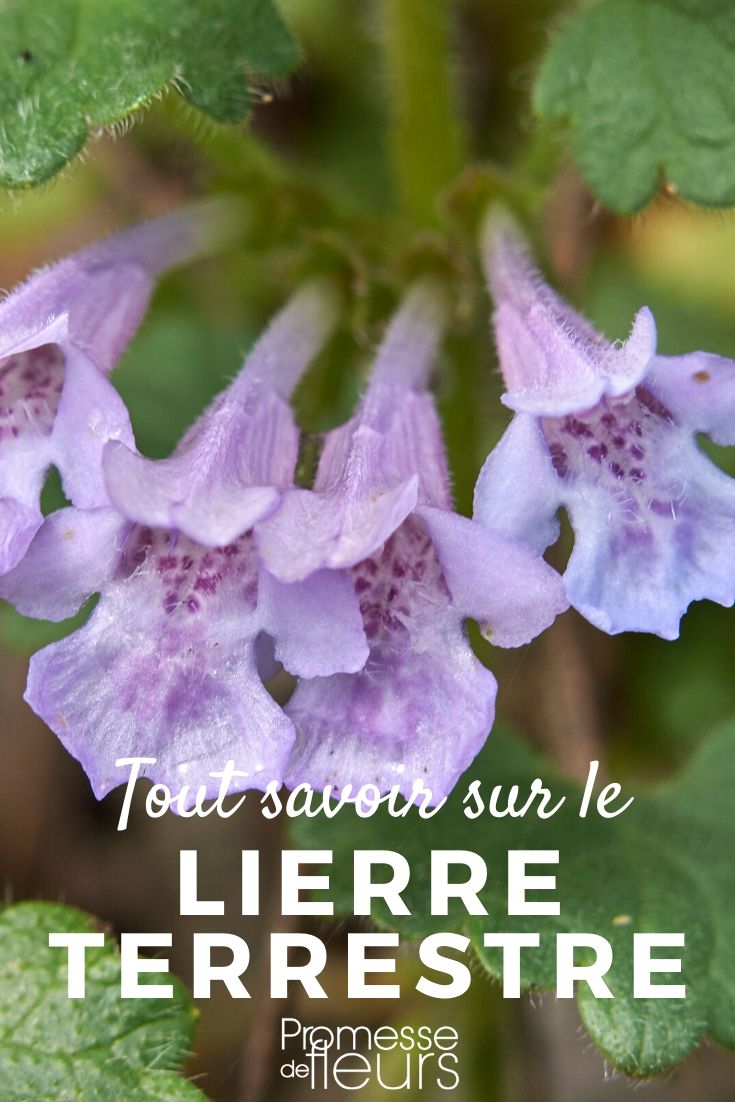


































Comments